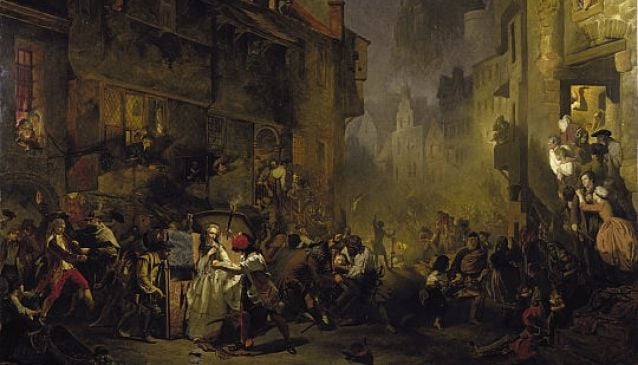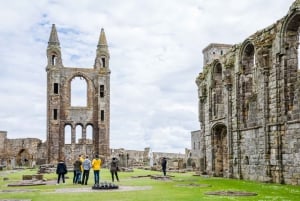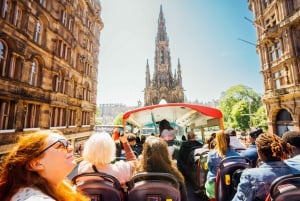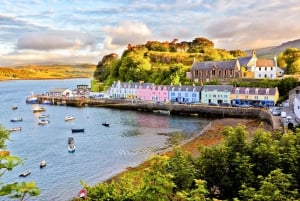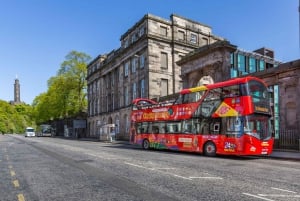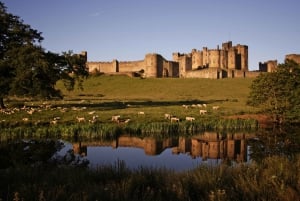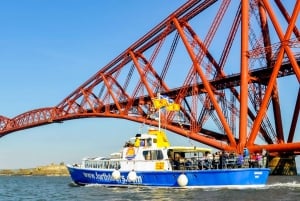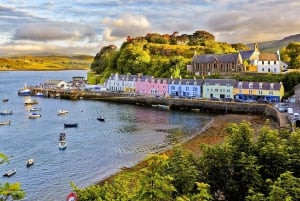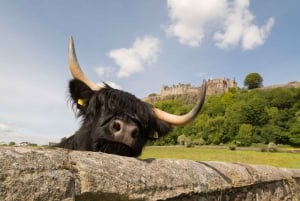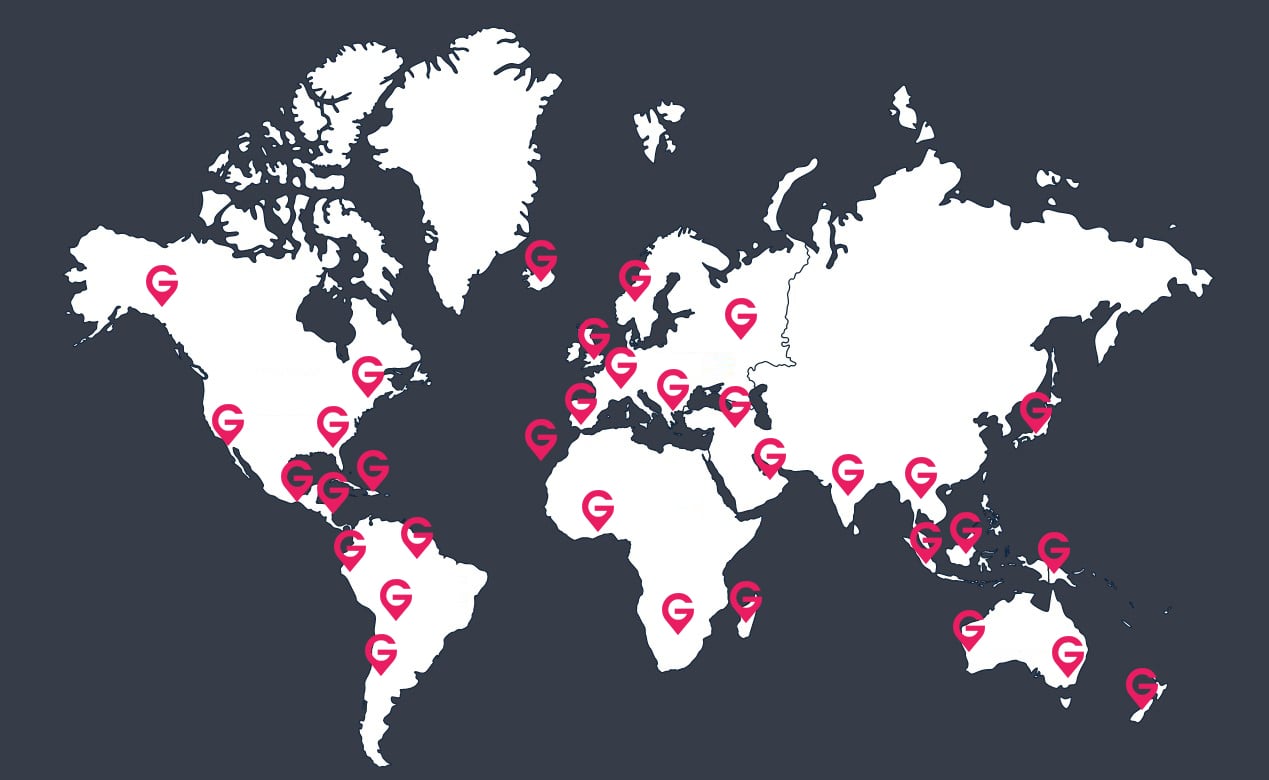The Dark Past of Edinburgh's Grassmarket
Looking at the area now, it is difficult to believe that it was the scene of many public executions.
Book Top Experiences and Tours in Edinburgh:
If youʻre booking your trip to Edinburgh last minute, we have you covered. Below are some of the top tours and experiences!- From Edinburgh: St Andrews & Fife's Fishing Villages
- Edinburgh: Hop-On Hop-Off Combo City and Britannia Bus Tour
- From Edinburgh: Isle of Skye 3-Day Tour with Accommodation
- Edinburgh: City Sightseeing Hop-On Hop-Off Bus Tour
- From Edinburgh: Holy Island, Alnwick Castle & Northumbria
The Grassmarket lies to the south east of the Castle, nestled at the foot of the Castle Rock. Though now it is a prime area for pubs and cafes, it was traditionally where farmers would gather to trade goods and cattle. In fact, there was a weekly cattle market from 1472 until 1911. The livestock entered the market via the Cowgate (hence the name of the street).
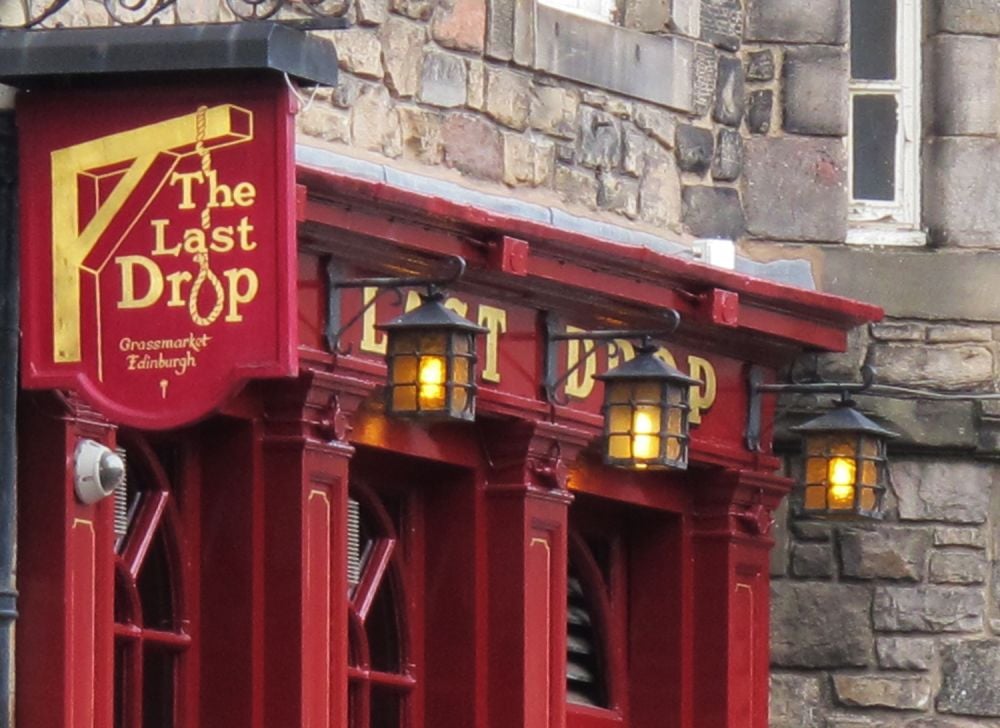
Several years later, in 1736, the Grassmarket was the scene of one of the most shocking incidents in the history of Edinburgh, “The Porteous Riots”. It began with the execution of a smuggler named Andrew Wilson, who had won public sympathy by helping another prisoner escape. A scuffle broke out in the crowd and Captain John Porteous, leader of the Town Guard, gave the order to open fire on the spectators. Six people died and many more were wounded. All hell broke loose and Porteous and his men were forced to retreat from the baying mob. Public opinion was that Porteous should be brought to justice for the killings and he was duly sentenced to hang. At the last minute, after petitioning Queen Anne, he was pardoned. This incensed the majority of those involved in this incident and a few of the ring leaders formed a lynch mob. Porteous was forcibly taken from his cell at the Tollbooth Prison and frog-marched down the West Bow (Victoria Street) to the Grassmarket. They paused on the way down to break into a shop for a rope, leaving a coin in payment. Captain Porteous was hanged from a dyer’s pole, just outside Hunter’s Close but before he could die, his body was cut down and given to the crowd to kick and abuse. He was eventually hanged again, this time for good. John Porteous lies buried in the nearby Greyfriars Kirkyard, his tombstone reads “All Passion Spent”.
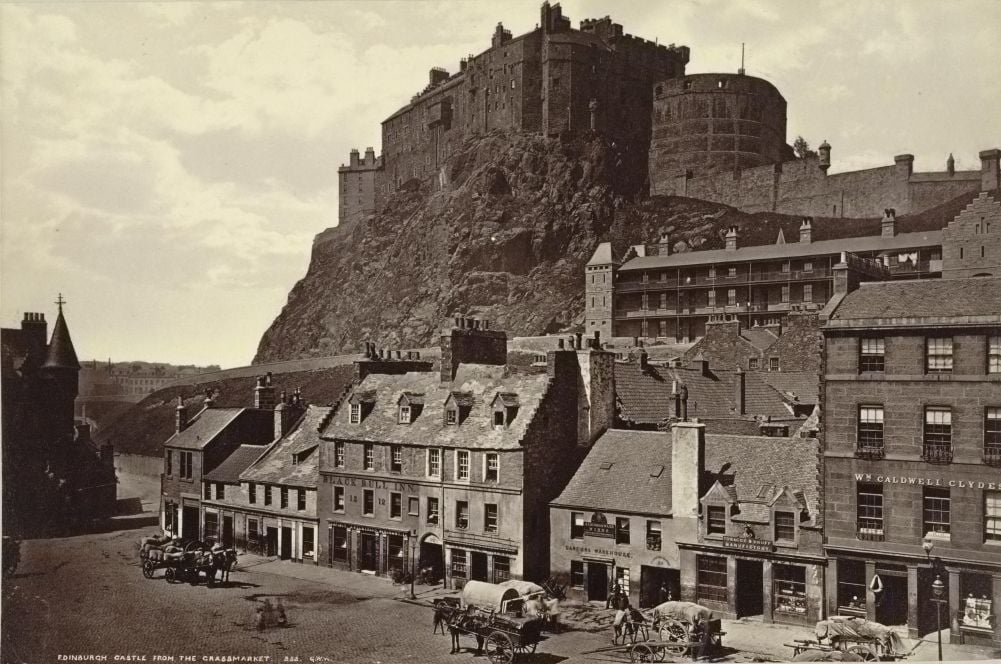
The notorious criminals, William Burke and William Hare, had lodgings on the West Port, just off the Grassmarket. In 1827 they were responsible for the deaths of 17 innocent people, who were killed for profit by selling their corpses for research to the anatomists at the University of Edinburgh. Many of the financial transactions between Burke and Hare and the anatomists took place in the White Hart Inn.
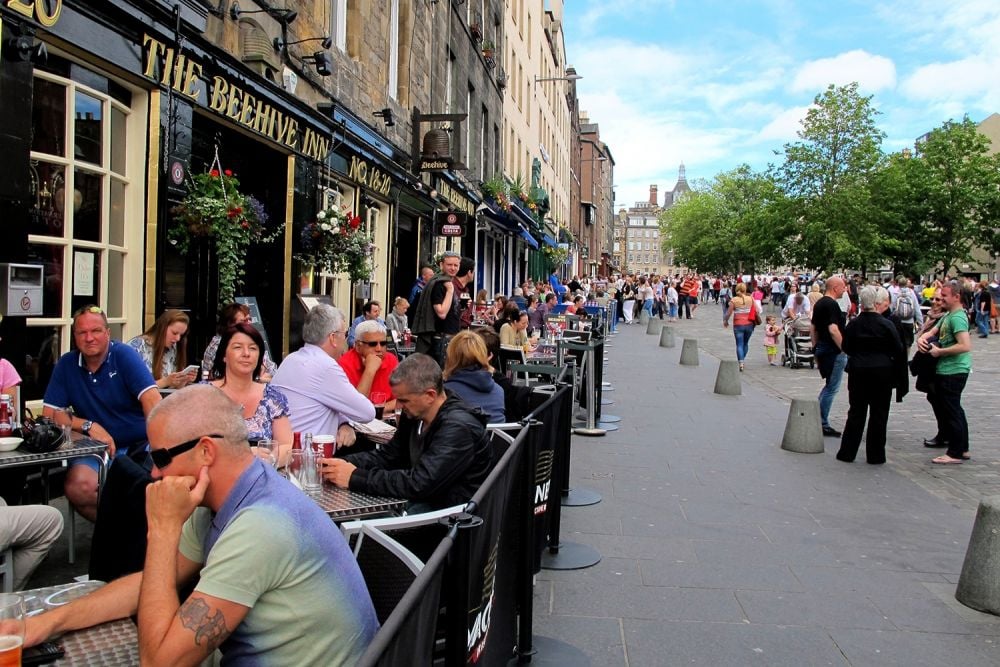
Happily, in the last 30 years or so, the fortunes of the Grassmarket have made a turn for the better with improvements such as the pedestrianisation of the area and the emergence of a café society. Now it is a vibrant and lively place enjoyed by tourists and locals alike. Home to many quirky, stylish and boutique shops, together with some of the best pubs in the city, the Grassmarket is certainly one of the top places to visit in Edinburgh, and a fine spot to sit and enjoy a dram or two.


